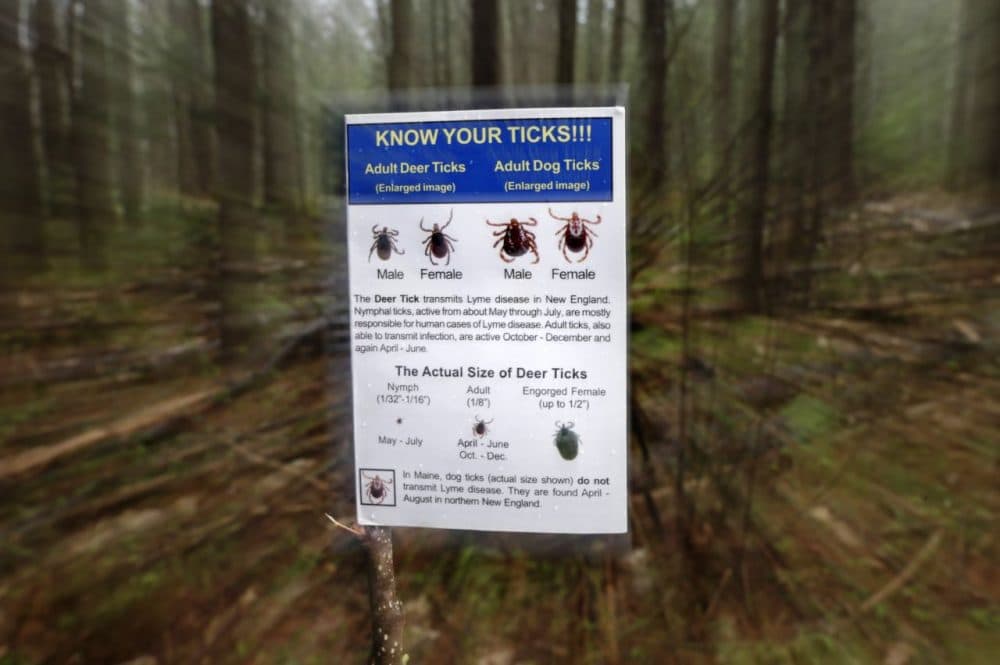Advertisement
Harsh Winter Does Little To Ease Lyme Disease Woes

The harsh winter did nothing to cull the nationwide tick population, and health officials are primed for a warm season that could see the number of Lyme disease cases rise.
In northern New England, the increase in cases of Lyme correlates with a growing population of deer ticks, which transmit the disease, state epidemiologist Stephen Sears said. In Maine and elsewhere, heavy snow acted as an insulating blanket that protected ticks from winter's cold, state entomologist Charlene Donahue said.

Nationwide, the number of cases of Lyme disease has held relatively steady over the past few years, and advocacy groups and federal agencies say they expect this spring, summer and fall to be active seasons for ticks and Lyme.
"Everybody's picking them off themselves already," Donahue said. "The cold weather didn't make a difference."
National tick populations depend on local climate conditions, said Darlene Foote, a spokeswoman for the Centers for Disease Control and Prevention. A federal report released last week said climate change could bring warmer winters that make diseases like Lyme more prevalent.
State health officials are required by law to report cases of Lyme disease to government authorities. Ninety-five percent of the cases reported in 2012 were in New England, the mid-Atlantic states, Minnesota and Wisconsin, according to the Centers for Disease Control and Prevention.
Maine's Lyme disease cases have grown steadily every year since 2010, when there were 752 cases. In 2013, there were 1,376 cases, the highest since the state started tracking the data. Vermont and New Hampshire have also seen steady climbs in Lyme cases in the last few years, state data show.

Nationally, cases have wavered between 30,000 and 37,500 cases every year since 2008, CDC data show. Massachusetts had the most cases in 2012, the most recent year for which nationwide data are available, CDC records say.
Maine's deer ticks have grown in distribution, Sears said. A decade ago, the insects were localized in southern and coastal Maine and now have spread statewide, said Charles Lubelczyk, a field biologist with Maine Medical Center. Areas of central and eastern Maine have become particularly dense with ticks, he said.
One reason the tick population has grown is because the recent mild winters have allowed the deer population to thrive, Lubelczyk said. Adult deer ticks attach to deer to feed and mate.
As the deer and tick populations thrive, cases of Lyme disease grow, Lubelczyk said. Maine's burgeoning tick population has also caused a rise in other tick-borne illnesses, including babessiosis, which infects red blood cells, and anaplasmosis, which infects white blood cells, Sears said.
"We don't see anything to halt it," Lubelczyk said.
Lyme disease symptoms include headache, fever and joint pain; in advanced stages, the disease can cause muscle weakness, numbness or pain in nerve areas, and heart problems. Lyme advocacy groups encourage people to frequently check for ticks after walking or hiking in wooded areas and to wear clothing that reduces skin exposure.
"We had a long, hard, cold winter that did nothing to reduce the tick population," said Happy Dickey, founding director of MaineLyme, an advocacy group. "We need to incorporate prevention into our daily life."